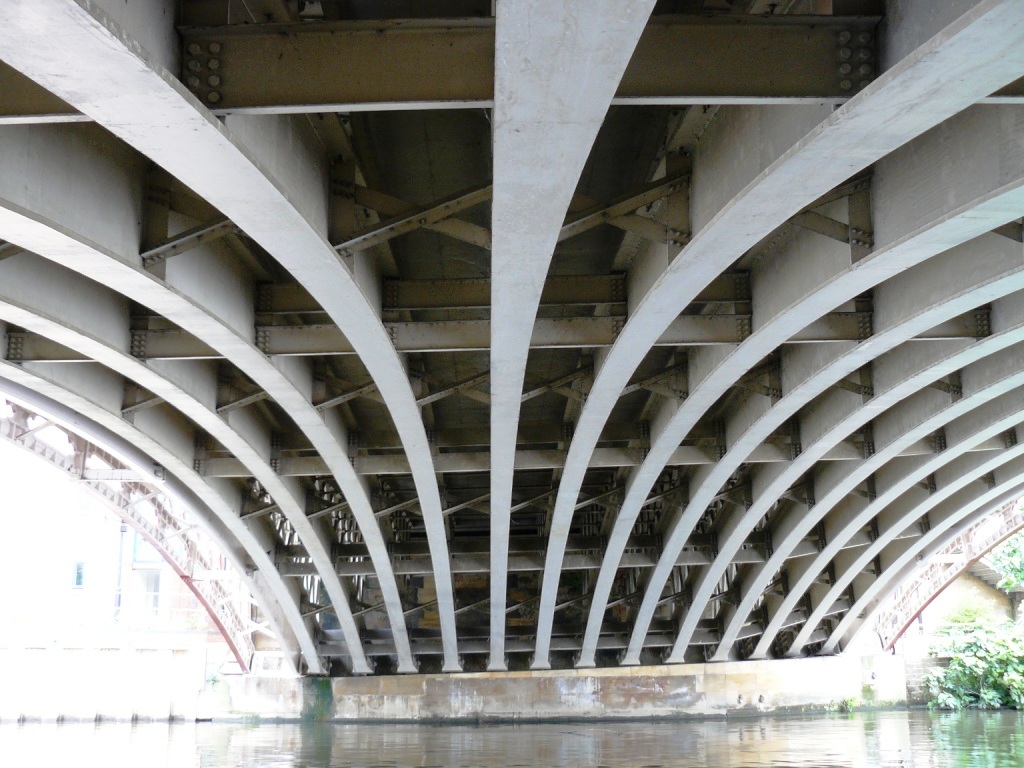
In the normal order of things after the Victoria Bridge in Neville Street we would cover Leeds Bridge but having done an extended article on this bridge, in December 2021 and January 2022, we can now go across to Bridge End and down Dock Street and on towards Crown Point Bridge, number four in our articles.
The origins of Crown Point Bridge go back to October 1836 when Charles Fowler, the indefatigable Engineer and Surveyor of Leeds, acting on his own initiative, prepared a scheme for a bridge and was supported by others along with the Leeds Mercury which was totally behind Fowler. In November 1837 there was a Notice of Intended Application to Parliament but details of the promoter were absent and it was stated that it would be a toll bridge, but no further action seems to have been taken.
The purpose of the bridge was to connect north-eastern and southern parts of Leeds and the projected stations of the North Midland, the Manchester & Leeds, and the York & North Midland Railways in Hunslet Lane. This would take most of the goods traffic from London and also the coal traffic from Rothwell Haigh to the north.
The project was once again revived in 1839 and on 30 October the Mayor presided over a public meeting and the engineer for the bridge was to be George Leather & Son and the surveyor was SD Martin. Fowler was completely ignored, a new application was made to Parliament and it was hoped that the bridge would be free from tolls. Included were the approach roads from Hunslet Road to Marsh Lane, these were later to be known as Crown Point Road and Black Bull Street.
On 14 April 1840 the Royal Assent to the Act of Parliament was received and on the 23rd the first meeting of the Trustees was held to discuss the building of the bridge and the Engineer, Surveyor, and Treasurer, John Smith, were formerly appointed.
March 1841 saw the start of the construction of the 120 foot span bridge with a width between the parapets of 45 feet. The ironwork was made by Booth & Company of the Park Ironworks of Sheffield and the stonework was erected by James Bray of Leeds while the design of the approach roads was undertaken by Henry Teal.
The area of land between Marsh Lane and Hunslet Lane was quite literally a marsh and was known locally as ‘Frogland’, the construction work involved forming deep drains below the approach roads that caused severe difficulties and delays. The bridge was built a short distance from the Nether Mills Weir.
On the south bank, part of Chadwick’s Dye House which in 1824 had a 24hp engine in use was partly demolished to accommodate the new bridge but the Company flourished until 1860. On the north side stood Smedley’s Oil Mill.
At some point in time the eastern aspect of the bridge was spoiled by the attachment of a pipe bridge for a water main, this led to damage to the ironwork and to the masonry abutments and further damage was done when the water main was removed in 1979.
It was decided that the bridge needed to be widened, upgraded and strengthened to take 40 tonne vehicles and at the same time take the opportunity to restore the appearance of the eastern (or downstream) face.

This impressive project was undertaken in 1994-95. The outermost pair of cast iron arches was retained, while steel arch ribs were installed to the main structure. The treatment at the eastern end was particularly impressive because of the necessity to accommodate the gradual widening of the river. This involved progressively increasing the span of the last three steel ribs and retaining the outer pair of cast iron arch ribs at the eastern end, whilst increasing their span. Here the span was increased to 136 feet and requiring new abutments (41.6m) increased by (5m). In order to increase the span of the two segmental cast iron arch ribs on the downstream side, a 7.5m section was removed at the crown and replaced by a 12.5m section assembled from three castings.
This approach was possible because, as designed, the ribs were assembled from segments connected together with abutting flanges and the radius of the new segments were specified to give a smooth curve.
The main contractor was Birse Construction, the steelwork contractor was Fairfield-Mabev and the ironwork was subcontracted to Marsh Brothers of Bakewell, Derbyshire, who subcontracted production of the rib segment castings to Lloyds (Burton). Leeds City Council’s Chief Engineer was Richard Kay MICE and the Resident Engineer was Stuart Rothwell MICE.
Main photo: Crown Point Bridge (1949) © Leeds Libraries via Leodis.net
While you’re here, can we ask a favour?
South Leeds Life is published by a not-for-profit social enterprise. We keep our costs as low as possible but we’ve been hit by increases in the print costs for our monthly newspaper which have doubled in the last two years.
Could you help support local community news by making a one off donation, or even better taking out a supporters subscription?
Donate here, or sign up for a subscription at bit.ly/SLLsubscribe


